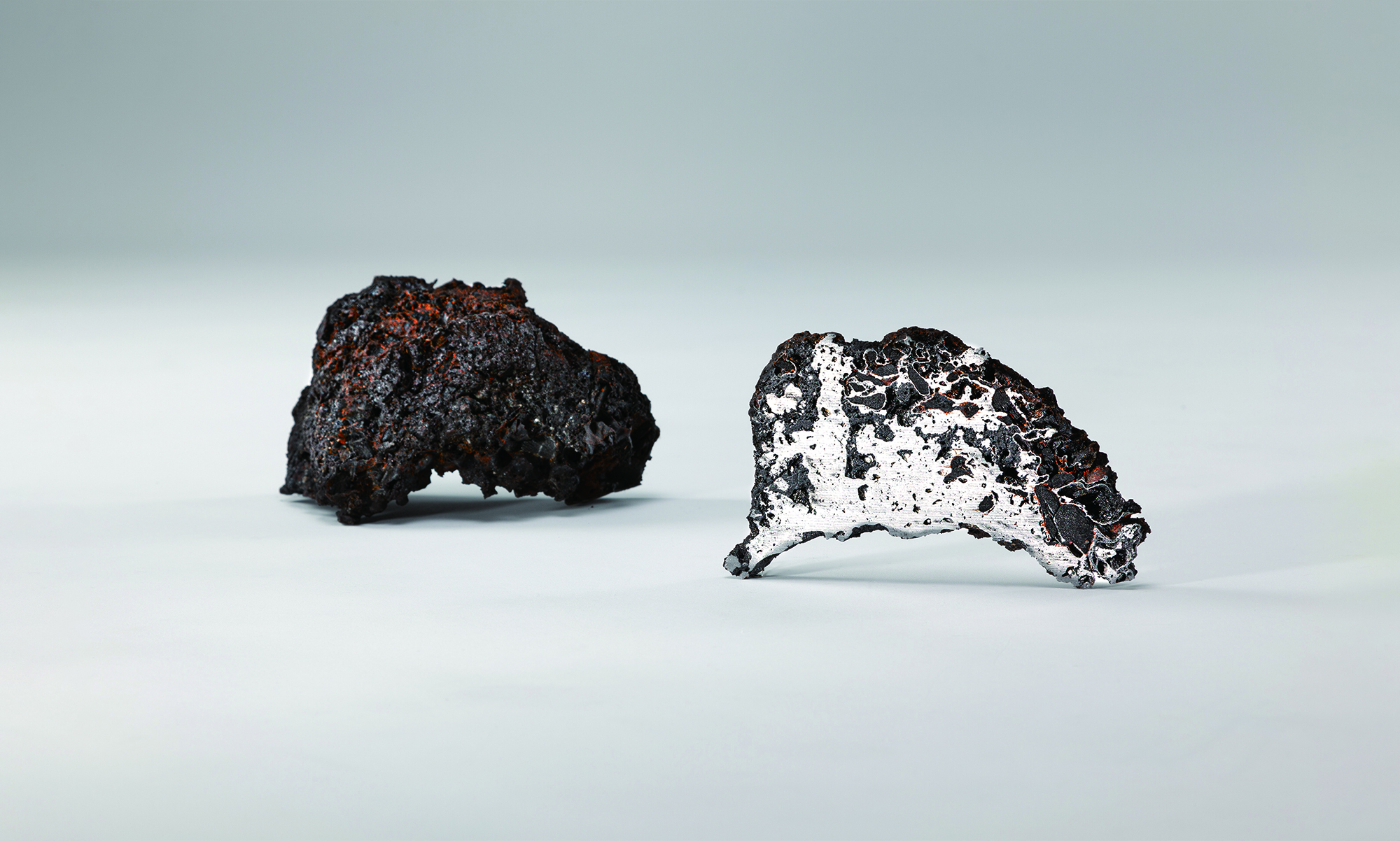たたら製鉄の実演Demonstration of Tatara (Ancient Iron Production Process)
マテリアル工学専攻Department of Materials Engineering

人類文明と技術の発展は「材料」の多様化・高度化を抜きには語れません。例えば古代の人類は天然の粘土を高温で焼成して土器を生み出し、それは現代のセラミックスへと繋がります。また一部の土石からエネルギーを投入して金属を抽出・精錬する方法を編み出し、金属材料を利用することで文明・技術の革新がもたらされました。
たたら製鉄は古代から近世にかけて発展し、千年以上にわたって受け継がれてきた製鉄技術です。木炭を用いて砂鉄や鉄鉱石を比較的低温で還元(酸素と結びついた鉄から酸素を取り除く)し、純度の高い鉄を生産できます。
マテリアル工学科では例年、五月祭の展示企画として、学生有志によるたたら製鉄を再現しています。その実演は、材料創製を自ら体験し、技術的・学問的な展開を広く学ぶ端緒となっています。ラウンジでは、五月祭でのたたら操業により製造した鉄塊「けら」を展示しています。
たたら製鉄の様子と、製造した鉄塊「けら」の実物
2017
制作:東京大学 大学院工学系研究科 マテリアル工学専攻
所蔵:東京大学 大学院工学系研究科 マテリアル工学専攻
マテリアル工学科で毎年、五月祭で実演するたたら製鉄で製造された「けら」(鉄塊)。外見は黒い塊であるが、切断すると内側には還元されて集まった鉄が観察される。
The development of human civilization and technology would have been impossible without the diversification and advancement of “Materials.” Ancient humankind, for example, sintered natural clay at high temperatures to produce earthenware, which leads to modern ceramics. In addition, ancient humankind developed a method for extracting and refining metals from minerals by utilizing energy, and using metal materials brought about innovations in civilization and technology.
The Tatara is an old Japanese ironmaking technology that was developed from ancient times and has been passed down for more than a thousand years. Wood charcoal has been used to reduce iron sand and iron ore at relatively low temperatures (removing oxygen from iron oxide) to produce high-purity iron.
In the Department of Materials Engineering, Tatara ironmaking is demonstrated by student volunteers as an exhibition at the May Festival every year. Through the demonstration, they experience the creation of materials themselves and learn about technological and academic development of materials science and engineering. In the lounge, KERA, an iron ingot, produced by Tatara operation at the May Festival is on display.
Demonstration of Tatara (ancient iron production process) and the produced iron ingot
2017
Production: Department of Materials Engineering, School of Engineering, The University of Tokyo
Collection: Department of Materials Engineering, School of Engineering, The University of Tokyo
Tatara is an old iron production method in Japan. As an opportunity to experience the material creation technology controlling substance and energy, the Tatara iron production is demonstrated every year at May Festival by student volunteers in Department of Materials Engineering.

